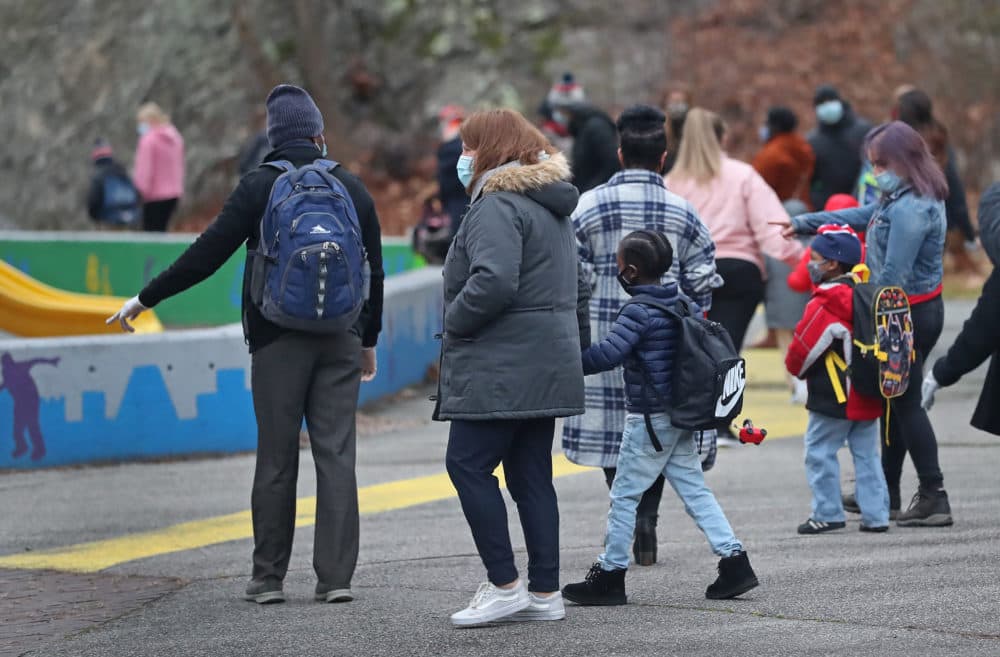Advertisement
Commentary
Boston Students Speak 74 Languages. Let's Make It Easier For Them To Learn

Growing up in Vero Beach, Florida, I acted as a translator between my mother and my teachers. My mom, a native Haitian-Creole speaker, was still learning English and my school didn’t have staff able to speak our home language. I even acted as a translator during parent-teacher conferences. Looking back, I can see that this need for translation resources created a barrier to a better education for me and countless other children.
The need for translation is an issue in Boston, too, where 31% of Boston Public Schools’ (BPS) students are English language learners. Students here speak more than 74 languages, but teachers and staff in BPS aren’t reflective of the diverse student population.
Last May, early on in the pandemic, BPS reported that at least 10,000 students may be virtual dropouts; many of the students who account for this number are also English language learners. Among many things, the virtual dropout rate highlights, is the need for new resources for students and their families who are learning English. This would help to promote school success and greater community integration.
BPS need not start from scratch. Already, BPS offers dual language or two-way bilingual programs, where English language learners are taught in both their native language and English. However, these programs are only available at select schools and only for Haitian Creole or Spanish-speaking students.
For a year, I worked as a teacher’s assistant with ninth-grade BPS students, including many who spoke my first language, Haitian Creole. A teacher's assistant that I worked closely with took the initiative to translate students’ math curriculum from English to Haitian Creole to better support their needs. I often translated for many parents and teachers.
English language learners are expected to learn a curriculum in a language that they have not yet mastered, while their parents are expected to navigate their children’s educations.
During parent-teacher conferences I would often observe and actively listen to the dialogue between the teachers and parents of students that I worked with closely. However, in one instance I noticed that the parents/guardians of one of my students were simply nodding instead of verbally communicating with the teacher. I was immediately reminded of my mother — I knew the student of these parents/guardians spoke Haitian-Creole, so I decided to ask them if they wanted me to translate.
It turned out that they couldn’t fully understand everything their child’s teacher was articulating during their conversation and they had concerns they wanted to convey. After deciding to actively translate, teachers and parents were able to fully understand each other and communicate their respective thoughts and concerns regarding the student. I ended up translating for the parents/guardians of my student as they met with different teachers; at the end of the night, they thanked me repeatedly.
Advertisement
Yet these are isolated cases. The majority of the time, English language learners are expected to learn a curriculum in a language that they have not yet mastered, while their parents are expected to navigate their children’s educations.
BPS schools that are currently offering dual-language programs have seen positive results. Expanding these programs across BPS — and to include additional languages — would benefit the educational and social outcomes of English language learners.
Translators would be a major step toward inclusion and better parent-teacher communication.
BPS should also hire translators. Many parents, who are still learning English, but want to be involved in their children’s education — parents just like my mom — are struggling to do so. Translators would be a major step toward inclusion and better parent-teacher communication.
Pittsburgh Public Schools provides a roadmap, where the student population speaks roughly 50 different languages. The school district incorporated the TransPerfect phone service, freelance translators and multilingual classroom assistants. Although they still face many challenges, Pittsburgh families have responded positively to the availability of these resources.
A positive consequence of pursuing these efforts is that BPS teachers and staff would become more racially, ethnically and culturally diverse. Having access to representative teachers allows students to advocate for themselves and to reach out when they need services or supports. Academic performance may also improve.
Implementing these programs will require a great deal of time and money. But just imagine what new opportunities will arise when children and their parents are given the tools to better communicate and understand what they are learning.
